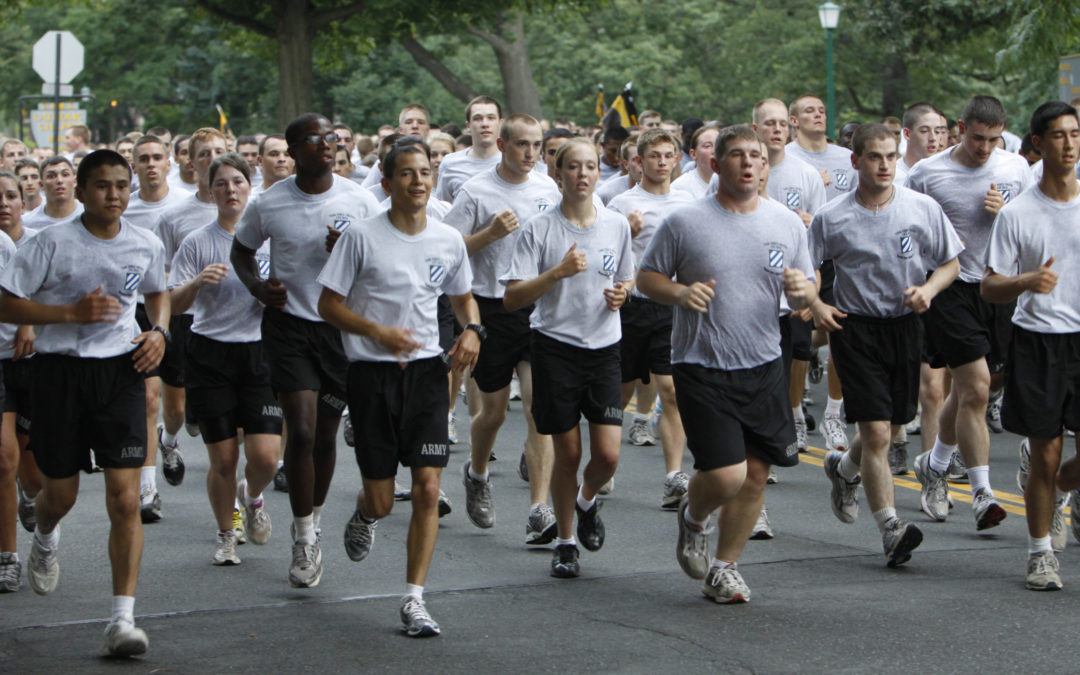Outcomes of Embedded Athletic Training Services within United States Air Force Basic Military Training
Fisher R, Esparza S, Nye NS, Gottfredson R, Pawlak MT, Cropper TL, Casey T, Tchandja J, de la Motte SJ, & Webber BJ. J Athl Train. 2021 56(2): Online ahead of print. doi: 10.4085/1062-6050-0498.1.
Full Text Freely Available
Take-Home Message
Military training squadrons who had access to athletic trainers had better outcomes than squadrons without access to athletic trainers during basic training.
Background
United States service members experience musculoskeletal injuries at alarmingly high rates, especially during basic training. Injuries during basic training are costly and a leading cause of attrition from military training. Athletic trainers are employed in a variety of military settings. However, it remains unclear if athletic trainers could be a cost-effective way to reduce medical discharges or attrition during Air Force basic training.
Study Goal
These authors performed a cluster-randomized trial to see if employing athletic trainers at Air Force basic training affected overall costs and outcomes compared to squadrons without access to athletic trainers.
Methods
The authors randomly assigned military recruits to one of three squadrons between 2016 and 2018. One squadron had access to two athletic trainers and a sports medicine fellowship-trained physician. Finally, the authors compared attrition (recruit discharge), graduation, and injury rates, as well as overall costs between squadrons with and without access to this sports medicine care model.
Results
The squadron with access to athletic trainers had 25% less musculoskeletal-related discharges, 15% less overall attrition, and better improvements in fitness than the squadrons without access to athletic trainers. The squadron members with access to athletic trainers attended fewer clinic appointments to orthopaedics or physical/occupational therapy, despite higher reports of encounters for inflammation or pain. Overall, the squadron with access to athletic trainers saved more than 10 million dollars in costs related to attrition and medical costs, even after subtracting personnel, equipment, and supply costs.
Viewpoints
These authors demonstrated that integration of sports medicine services at basic training resulted in improved outcomes. Total investment for the athletic training personnel, equipment, & supplies was just under 1 million dollars. Assuming much of this would be upstart expenses, it would be interesting to dive further into the data to see a return on investment across multiple years for the salary of the sports medicine team, including athletic trainers and physicians. Furthermore, it would be interesting to know if the number of available athletic trainers influence patient satisfaction. The athletic trainers that were employed in these squadrons were early in their professional careers. It would be interesting to see if more experienced athletic trainers may have an additional benefit. While there were more encounters for pain/inflammation, it could be that the trainees were reporting their symptoms earlier due to the easy access to athletic trainers, presumptively mitigating the severity of conditions warranting physician visits. It would also be interesting to see if the integrated sports medicine team had an effect beyond musculoskeletal injuries or bottom-line costs. For example, did the presence of athletic trainers facilitate mental health screening/referrals or overall satisfaction/confidence of service members during very demanding times? It would also be interesting to see if there are improvements or utilization possibilities to deploy this medical model beyond basic training within the Air Force – similar to other branches of the United States Military.
Clinical Implications
Athletic trainers are a valuable addition within the United States Air Force, specifically during basic training.
Questions for Discussion
Are there any barriers that you see to athletic trainers working in military settings? Are there any opportunities for primary or secondary prevention with athletic trainers in this setting?
Related Posts
Proof is in the Report
An Ounce of Prevention = Money Saved
Getting to the Heart of the Problem
Written by: Nicole M. Cattano
Reviewed by: Jeffrey Driban


